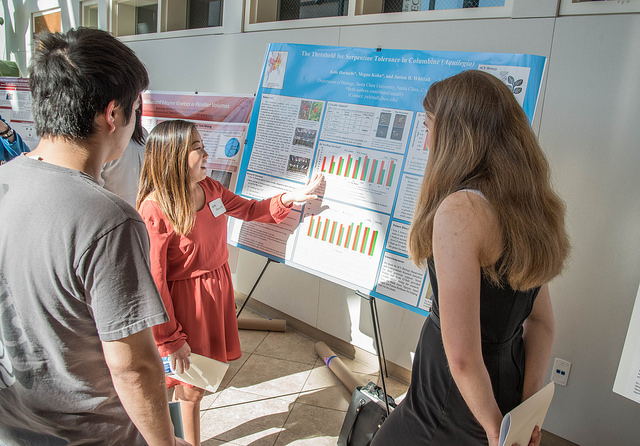
The Threshold for Serpentine Tolerance in Columbine (Aquilegia)
Kate Horiuchi, Megan Kohn
Faculty Mentor: Justen Whittall
Environmental gradients drive biological diversification, especially in sessile organisms like plants. Gradients in soil chemistry can produce particularly strong selection pressure often leading to adaptations and even produce new species. The Ca:Mg gradient separating serpentine and non-serpentine soils can be dramatic and is famous for the associated strong selective pressures on plants. In this experiment, we have focused on the serpentine columbine (Aquilegia eximia) which is restricted to serpentine seeps in central and northern California. These soils average Ca:Mg ratios of 0.14 producing a steep environmental gradient with the neighboring non-serpentine soils (Ca:Mg of 3.49) where its sister species, the non-serpentine columbine (A. formosa) often grows. In a series of soil dilution experiments conducted in the greenhouse, we have identified the nearly complete mortality of the non-serpentine columbine when grown in pure serpentine soil. To determine the threshold for serpentine tolerance in this species, we grew it and the serpentine columbine in a series of Ca:Mg ratio dilutions ranging from 0.14 to 3.49. Survival of the non-serpentine columbine changes abruptly at a surprisingly low level of Ca:Mg (0.50), while A. eximia survived comparably across all soil dilutions. Aboveground biomass and growth rate provide further insights into the threshold for serpentine tolerance in the non- serpentine columbine. Our results reveal that plants’ response to the Ca:Mg gradient is even steeper than the soil gradient itself.